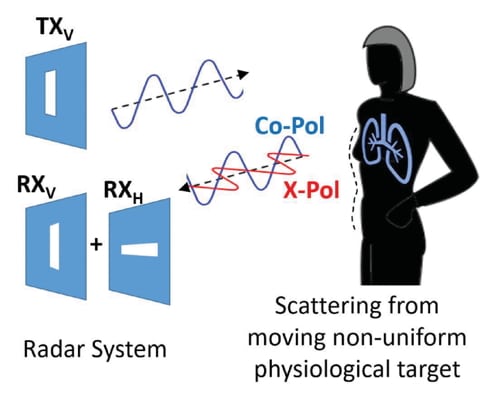Polarimetric Assessment Methodology for Doppler Radar Respiratory Measurements
Abstract
DOI: 10.1109/TMTT.2025.3564536
IEEEXplore: https://ieeexplore.ieee.org/document/11007501
Device
Doppler radar for respiratory measurements with a comprehensive polarimetric study of radar signatures and an exploration of methods to improve SNR performance that expands the range of potential applications.
Spectrum
2.4 GHz
Novelty
The full-polarimetric configuration with a single receiver antenna offered superior flexibility and depth for detailed polarimetric studies, while the dual-receive configuration minimized hardware complexity and processing requirements.
The dual-receive antenna configuration achieved comparable or improved SNR performance when compared to the full polarimetric single receive approach with significant robustness when the polarization of the received signal was unknown or highly variable as is typical of body-scattered signals.
Application
Respiratory measurements
Performance
Cross polarization ratio (CPr) for phantoms ranged from 3.169% to 15.595% depending in the antenna configuration and polarization.
Modified signal to noise ratio (SNR*) for phantoms for the single-Rx approach ranged from 0.330% (best case) to 20.819% (worst case) depending on the phantom and the antenna polarizations.
SNR* for phantoms for dual-Rx configurations ranged from 0.291% to 1.893% depending on the phantom, the Tx antenna polarization and the control voltage.
For human subject tests, 45% of tests, CPr ≤ 30%; for 31.25% of tests, 30% ≤ CPr ≤ 70%; 15% of tests, 70% ≤ CPr ≤ 130%; for 8.75% of tests, 130% CPr 198%.
